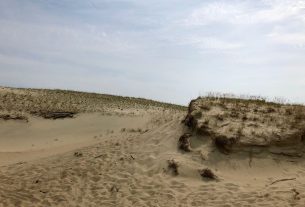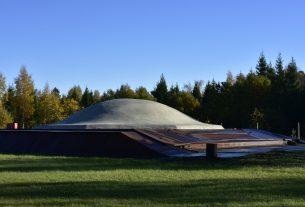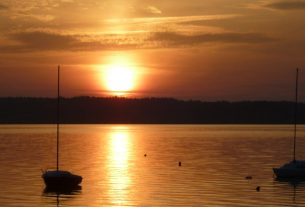LOCATION
By the time Rugia Island was conquered by the Danes in 1168, it was an important Slavonic Pagan worship centre. Its symbol was Arkona with Sviatovid’s Temple described by Danish chroniclers. Like in Pomerania, upon the introduction of Christianity monasteries founded in this place exerted significant impact on the conversion of the locals into Christianity. In the 19th century traces of the past, including the ancient ones, such as Neolithic megaliths, became an inspiration for German Romanticism. Rügen, the biggest of German islands constitutes the centre of tourism for many years. Bergen auf Rügen, the former capital of Rügen princes is situated in the centre of the island, at 54°25′N 13°26′E. Nearby Sasnitz offers ferry connections with Scandinavia (Ronne on Bornholm and Trelleborg in Sweden).


photo source: own photos.
SIGHTSEEING
Bergen auf Rügenis located in the centre of the island. All the landmarks are accessible by car, however, getting to the most interesting sites of Cape Arkona and Jasmund National Park requires a few-kilometre walk. Parking is payable in both cases, similarly to the access to the most important part of Jasmund Park. The hill fort in Arkona has not been available for tourists since the part of the cliff it is situated on slid, you can admire it from the nearby observation tower (Der Peilturm), though. The temples in Altenkirchen and Bergen are opened for visitors throughout the day (changeable hours).
ATTRACTIONS
Bergen auf Rügen is the former Slavonic Rugard, the seat of the rulers of the island. What remained after the dukes’ residence is Rugard hill fort, with Ernst-Moritz-Arndt-Turm observation tower (admission payable) on top. It allows a view of the whole island. In the heart of the town there is former Cistercian St Mary’s Church dating back to the 12thcentury. The church features historical furnishings and an 11thc. Slavonic grave, probably a ducal one, embedded in the wall. In Lancken-Granitzthere is a preserved prehistoric cemetery with a complex of Neolithic dolmens. A memento of the Pagan times is an imposing hill fort Hertha located by the road to cretaceous cliffs and the well-known King’s Throne (Konigsstuhl) in Jasmund National Park, which is the site of pagan worship as well. There is also an interesting sacrificial stone. Arkona is Sviatovid’s Sanctuary captured and destroyed by the Danes in the 12thcentury. What has remained until present is a part of the hill fort located on a high cretaceous cliff. In nearby Altenkirchen we can see one of the oldest churches on the island – a 12th/13thRomanesque-Gothic temple richly furnished with, for instance, a four-headed baptismal font and a pagan stone depicting a Slavic deity holding the horn of plenty, hidden in the vestry, as built in the foundation.
INFORMATION SOURCES
Heritage Class: [ C ]Cultural Heritage
Subclass [SR] :BLUE and GREEN believes and religions
WEB PAGES
https://www.stadt-bergen-auf-ruegen.de/
http://www.nationalpark-jasmund.de/
https://www.ruegen-hiddensee.de/






